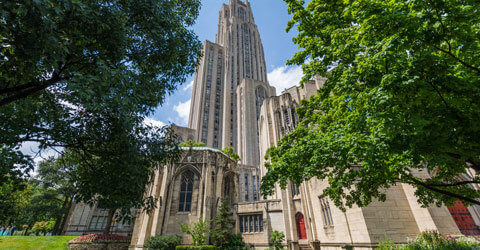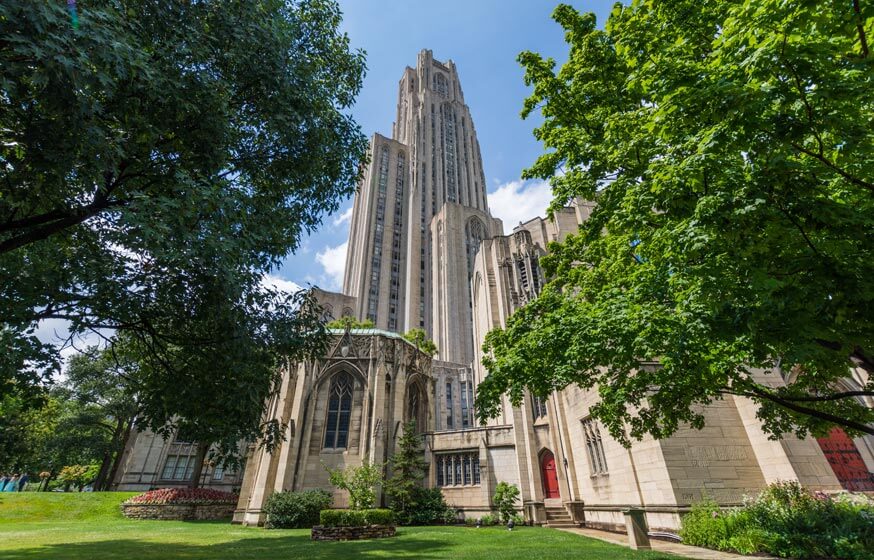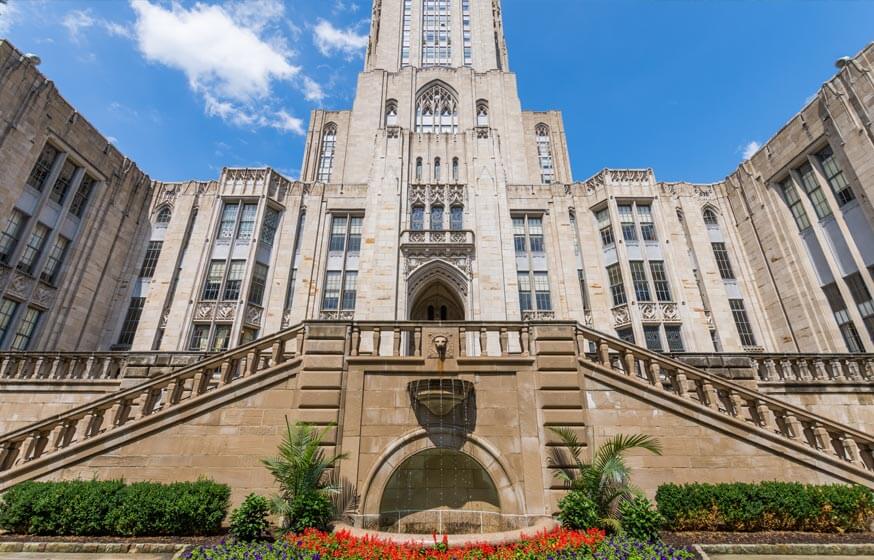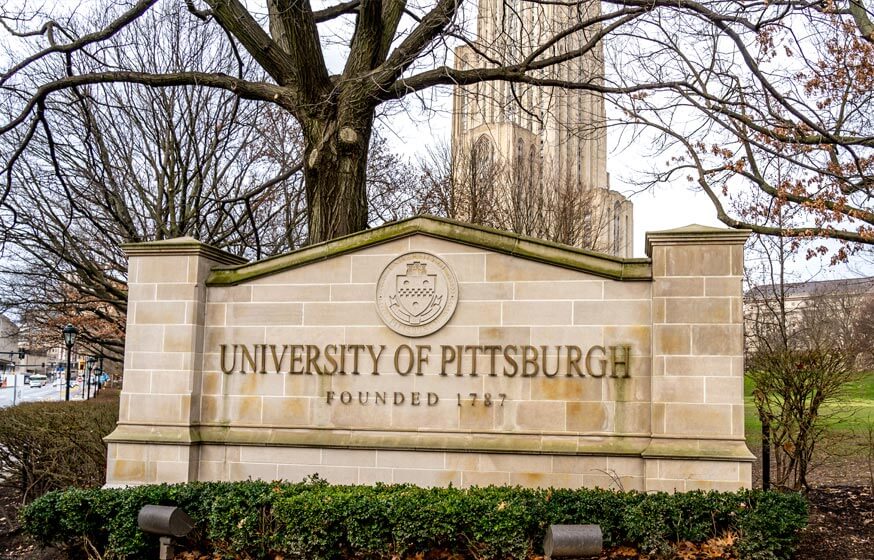Get Matched With Online Colleges
Once you show up here, you’re going to need to take time to look around campus, walk and get lost and identify buildings you’ll be using. The same goes for Pittsburgh—the city is large, so you’ll probably be using your GPS for a few weeks if you plan on going into the city a lot.
As you consider attending the University of Pittsburg, you’ll find that the student population is big: 32,600+. Some students live in on-campus dorms, while others rent apartments or houses off-campus.
Search All Programs
Overview of University of Pittsburgh–Pittsburgh Campus
The student-to-faculty ratio is a decent 14 to 1, which makes it fairly easy to get into your professor’s office for office hours. With such a large student body, that may surprise you. But the school has gone out of their way to retain large numbers of faculty. This way, they spread out the student and faculty numbers.
The university accepts advanced placement credits for AP exams you have passed and also accepts dual credits for students who are in high school and college simultaneously.
General Information
| School Type | Public |
|---|---|
| Campus Setting | City: Large |
| Campus Housing | Yes |
| Student Faculty Ratio | 14:1 |
| Graduation Rate | 83% |
| Year Founded | 1787 |

Student Enrollment
Total Students32,686
23,385
9,301
Undergraduate Student
Male 10,757
Female 12,628
Graduate Student
Male 4,278
Female 5,023
Explore Map
Top Rankings For University of Pittsburgh
Admissions
APPLICATIONS32,091
ACCEPTANCE18,292
Acceptance Rate57%
Enrollment 4,024
| Admissions | |
|---|---|
| Application Fee | $55 |
| High School GPA | Recommended |
| High School Rank | Considered But Not Required |
| High School Transcripts | Required |
| College Prep Courses | Required |
| Recommendations | Considered But Not Required |
| SAT/ACT | Required |
| TOEFL (Test of English as a Foreign Language) | Required |
| Application Deadline | Rolling |
| Common Application Accepted | Yes |
Tuition Cost & Financial Aid
When you combine your tuition, books, supplies, room, board and other costs, the total average price a student pays to attend Longwood University is $34,409.
Financial aid can cover a large part of this; in a recent academic year, Longwood’s average net price was $22,600, meaning that’s what students paid after financial aid was applied. And, depending on your parent’s annual income, you may pay even less.
- Families who earn less than $30,000 pay around $20,075
- Families earning between $48,001 and $75,000 pay around $25,110
- Families who earn more than $110,001 pay around $31,201
A decent number of freshman students, 77%, qualified to receive financial aid. About 55% received an average of $12,737 in grants or scholarships. A lower percentage (47%) received an average of $12,717 in institutional grants and scholarships.
| Average net price | 2018-2019 |
|---|---|
| Net Price | $22,600 |
| Average Total Aid | $12,737 |
| Students Receiving Financial Aid | 77% |
| Room & Board | $11,250 |
Sticker Price
- Tuition In-State - $19,718
- Tuition Out-of-State - $33,746
- Books and Supplies - $755
- Room & Board - $11,250
- Other - $2,686
Academics
Before you finish your freshman year, you’re going to make a decision that is critical to your future and to the university. If you decide to stay, you become part of the retention rate: a number that illustrates how many first-year students are staying for their second year. At UofP, this is 93%, which is excellent.
Looking at graduation rates, UofP is doing well there, too. The 4-year graduation rate is 65% and the 6-year rate is 83%.
You may, at some point, look at your schedule and notice that one class or more interferes with each other or your work hours. Do you just drop the classes and take them at another time? Hold off on that and check with your advisor. The university offers both evening classes and online learning. You may be able to use these resources to inject some much needed flexibility into your schedule. This is especially important for classes that aren’t offered every academic year.
The most popular degrees offered here are: engineering; business, management; marketing and related support services; health professions and related programs; biological and biomedical sciences; and psychology.
Retention
Rate
4 year
Graduation
Rate
6 year
Graduation
Rate
Student Population Total
Student Population 32,686
23,385
9,301
Most Popular Programs & Majors
(# of Diplomas Awarded by Subject)
| All Engineering Majors | 713 Total Graduates / 15% |
|---|---|
| Mechanical Engineering | 191 Graduates |
| Chemical Engineering | 115 Graduates |
| Bioengineering and Biomedical Engineering | 83 Graduates |
| Computer Engineering, General | 83 Graduates |
| All Business Majors | 615 Total Graduates / 13% |
| Finance, General | 205 Graduates |
| Marketing/Marketing Management, General | 194 Graduates |
| Accounting | 137 Graduates |
| Logistics, Materials, and Supply Chain Management | 49 Graduates |
| Health Professions and Related Programs | 594 Total Graduates / 13% |
| Registered Nursing/Registered Nurse | 215 Graduates |
| Rehabilitation Science | 147 Graduates |
| Pharmaceutical Sciences | 85 Graduates |
| Audiology/Audiologist and Speech-Language Pathology/Pathologist | 57 Graduates |
| All Biological & Biomedical Majors | 453 Total Graduates / 10% |
| Biology/Biological Sciences, General | 217 Graduates |
| Neuroscience | 148 Graduates |
| Molecular Biology | 29 Graduates |
| Ecology and Evolutionary Biology | 17 Graduates |
| All Psychology Majors | 401 Total Graduates / 9% |
| Psychology, General | 340 Graduates |
| Educational Psychology | 61 Graduates |
| All Other Diplomas | 41% |
Outcome & Salary
Let’s say you accept a wonderful job and you’re going to start right after graduation. Graduate’s from the University of Pittsburg have early-career salaries that average around $55,900. Later, around the middle of their careers, graduate’s salaries increase to an average of $100,400. This shows that it’s worth the effort to get yourself all the way through college and to keep searching for your first job after college. Even if you don’t start out with the salary you’re hoping for, things are sure to get better.
Another way to think about this is in terms of return on investment (ROI). Your 4-year cost of education figures into this: that figure averages around $90,400. A UofP graduate’s 10-year salary earnings potential is $724,230 and their 20-year potential earnings are closer to $1,728,230. After you subtract the 4-year cost of education, the total 10-year projected ROI is $633,830 and the 20-year projection is $1,637,830.
High school graduates’ salaries and income aren’t as high. The national average salary for a high school graduate is $38,792. Their 10-year projected income is $387,920 and their 20-year projected income is $775,840.
| Graduates Salary | |
|---|---|
| College Grads Early Career Salary | $55,900 |
| College Grads Average Salary | $72,423 |
| College Grads Mid Career Salary | $100,400 |
| Return on Investment (ROI) | |
|---|---|
| 10 Year Salary Earnings Potential | $724,230 |
| 20 Year Salary Earnings Potential | $1,728,230 |
| Cost of Education (Net Price) 4 Year | $90,400 |
| 10 Year Projected ROI | $633,830 |
| 20 Year Projected ROI | $1,637,830 |
| No College Education Salary Comparison | |
|---|---|
| National Average Salary | $38,792 |
| 10 Year Projected Income | $387,920 |
| 20 Year Projected Income | $775,840 |
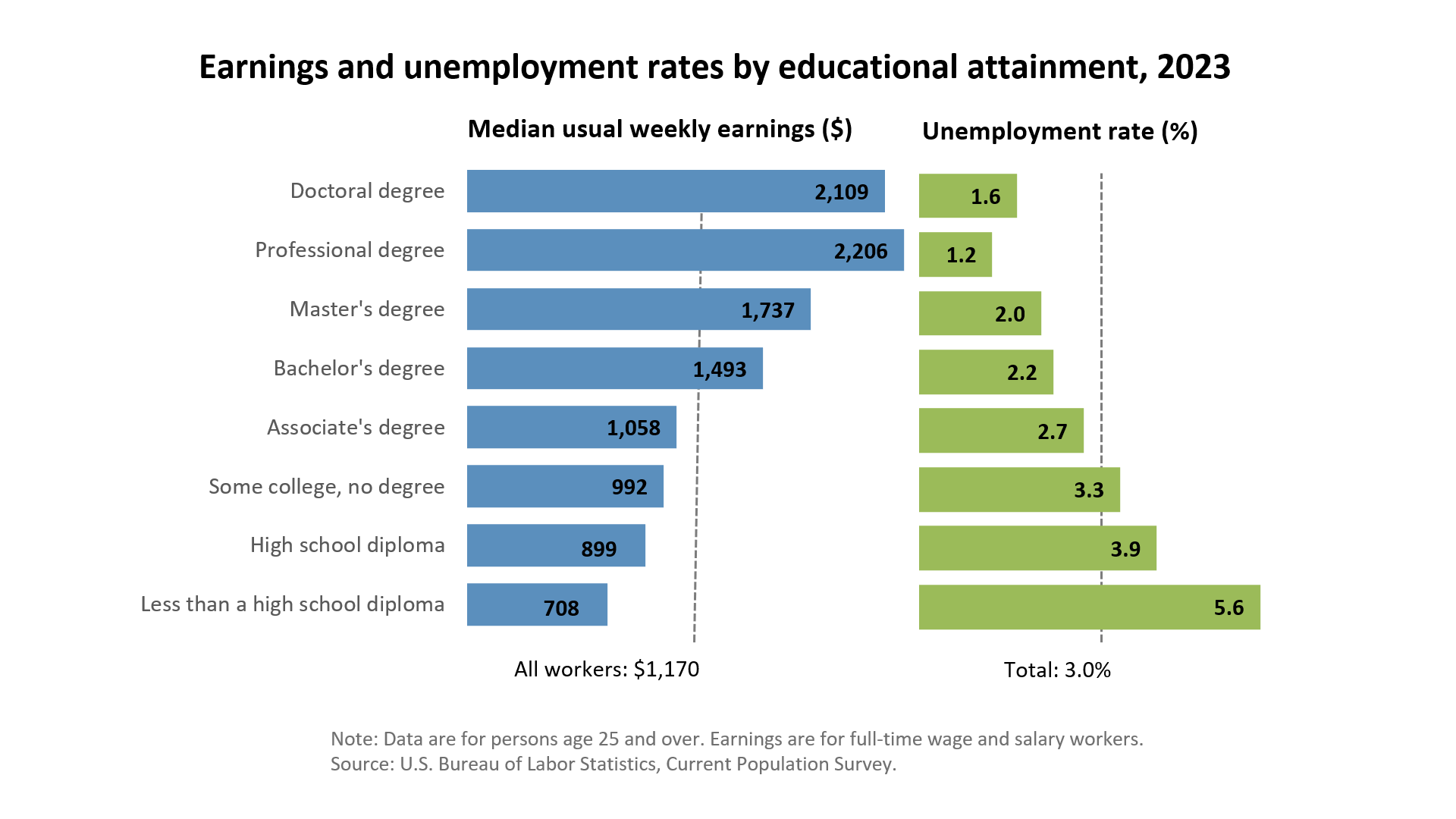
Related Top College Resources





















